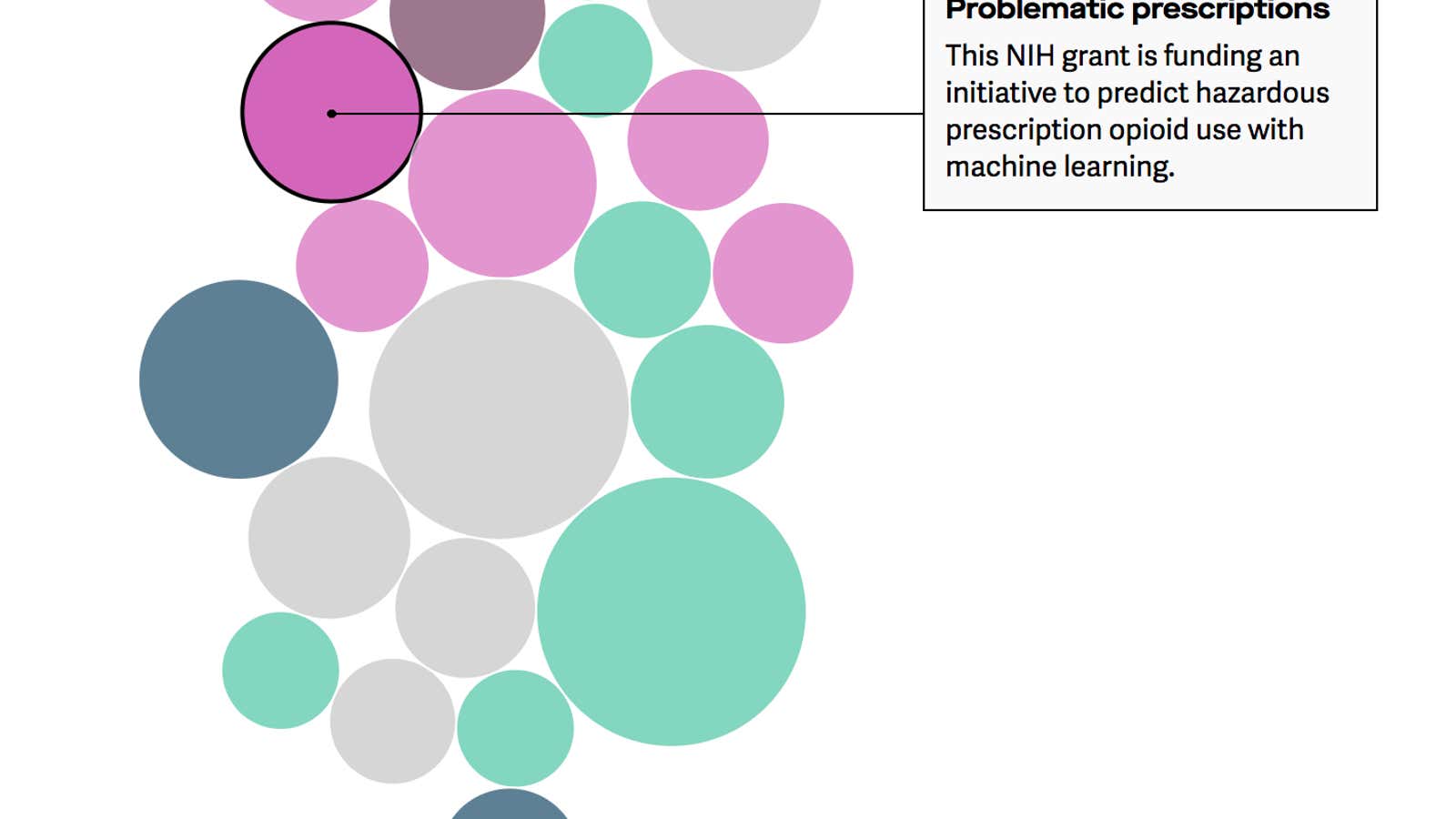Government research in machine learning is ramping up. Since 2003, the US government has spent nearly a billion dollars on AI-focused or facilitated research grants. Half of it was awarded in the past four years. The money has been used to fund research into everything from bird migration to astronaut assessments, according to a trove of federal assistance data compiled by Quartz.
Here’s what that explosion in funding looks like. These are all the grants involving machine learning since 2016 that provide at least $500,000.
The research grants shown above are those found in the federal funding database containing the words “artificial intelligence,” “machine learning,” “deep learning,” “neural network,” or “predictive analytics.” The data reflect what has been filed by federal agencies through the US DATA Act; the listing is incomplete due to varying and infrequent reporting schedules.
These nearly 1,500 federal grants provide a glimpse into the potential of AI applications. They reveal what researchers find interesting, and what the government is willing to fund. Topics run the gamut, from oceanic and atmospheric research to biomedical inquires, mental health study, and air defense. There are also AI-related research grants for studying aging, cancer, drug abuse, and addiction.
More than 400 universities and research centers received funding. Cornell, the University of Maryland, the University of California San Diego, and the University of Wisconsin are among those awarded the largest overall amounts.
At the end of last year, the Department of Defense pledged $2 billion toward AI research. In February 2019, Trump signed an executive order “to sustain and enhance the scientific, technological, and economic leadership position of the United States” in AI research.
Yet, the US trails behind other countries when it comes to actualizing the potential of AI. It ranks fourth on the Government AI Readiness Index, a global ranking of how prepared governments are to benefit from artificial intelligence. And when China declared in 2017 that it would be the world’s leader in AI by 2030, it wasn’t just talk. The city of Beijing alone is investing $2 billion in the technology.
